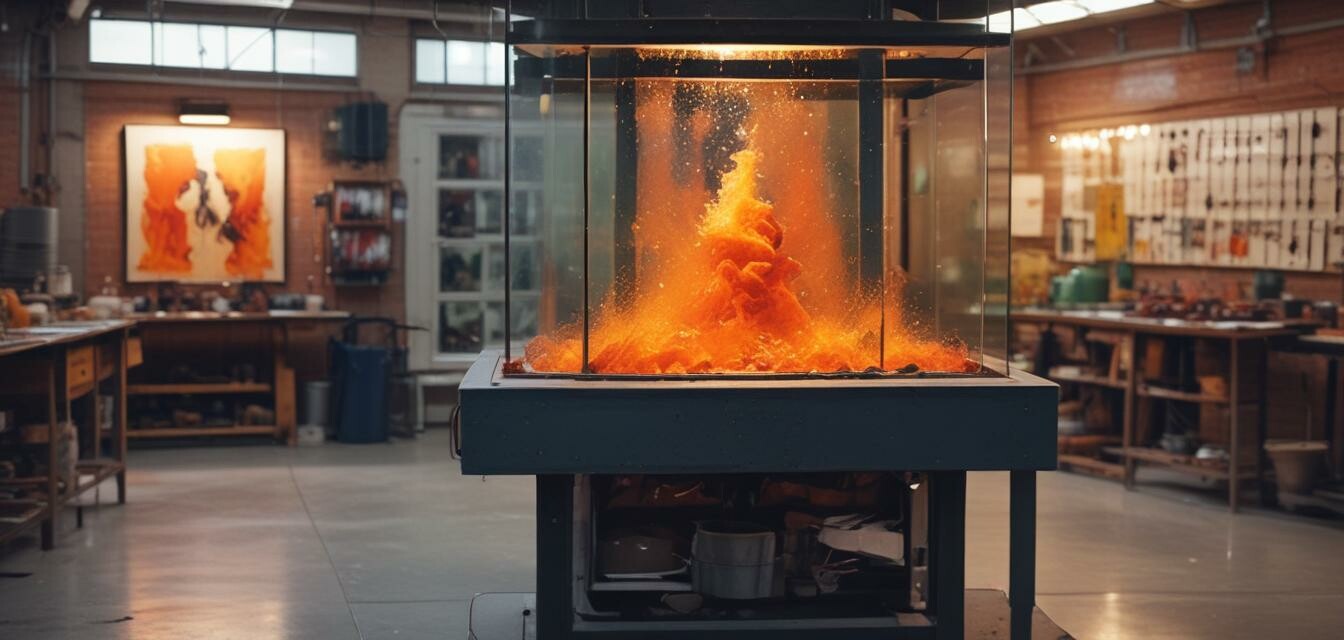
Expert Opinions: Choosing the Right Kiln for Your Art Style
Key Takeaways
- Different kilns serve various glass-making techniques, such as fusing, slumping, and casting.
- Your choice of kiln should align with your artistic goals and the size of your projects.
- Consider the kiln’s temperature range, capacity, and features before making a purchase.
When it comes to glass-making, selecting the right kiln is crucial for achieving the outcomes you desire in your art. With a wide array of options available, it can be overwhelming to choose a kiln that best suits your unique style and requirements. In this article, we will provide you with insights from industry experts on how to navigate the complexities of kiln selection.
Understanding Kiln Types
Before diving into expert opinions, let's first take a look at the different types of kilns available. Each kiln caters to specific techniques and offers varying capacities and functionalities.
| Kiln Type | Ideal For | Temperature Range (°F) |
|---|---|---|
| Tabletop Kiln | Beginners and small projects | Up to 1800°F |
| Front-Loading Kiln | Fusing and slumping | Up to 2400°F |
| Glass Casting Kiln | Glass casting | Up to 2300°F |
Expert Insights on Choosing Your Kiln
Based on conversations with seasoned glass artists, here are the top considerations for selecting the right kiln:
1. Identify Your Art Style
Your artistic approach will significantly influence the type of kiln you need. If you're focused on fusing or slumping, a front-loading kiln may be ideal. For artists interested in more advanced techniques like casting, investing in a dedicated glass casting kiln is recommended.
2. Assess Your Workspace
Space considerations are key. A large studio may accommodate a larger kiln, while a smaller workspace may be better suited for a portable tabletop kiln. Always measure the area where you plan to set up your kiln to ensure a proper fit.
3. Temperature Range Matters
The temperature capabilities of your kiln should align with the glass types you want to use. Consider what types of glass you’ll be working with and choose a kiln that can handle those specific melting temperatures.
4. Think About Capacity
Your project's scale should guide your capacity choice. If you plan to create larger pieces, a kiln with a higher capacity will be necessary. For smaller projects, a compact model may suffice.
Additional Features to Consider
Modern kilns often come with a range of additional features that enhance usability and control over the firing process. Here are some features to look for:
- Digital Controllers: These allow for precise temperature controls and firing schedules, crucial for complex projects.
- Safety Features: Look for kilns with safety mechanisms like automatic shut-off to ensure safe operation.
- Ventilation: Proper ventilation systems can help in reducing harmful fumes during firing.
Budgeting for Your Kiln
When selecting a kiln, budgeting is essential. Here’s a breakdown of typical price ranges corresponding to kiln types:
| Kiln Type | Price Range |
|---|---|
| Tabletop Kiln | $300 - $800 |
| Front-Loading Kiln | $800 - $2000 |
| Glass Casting Kiln | $1500 - $3000 |
Making an Informed Decision
Choosing the right kiln is not merely a financial investment but also a commitment to your artistic growth. Taking the time to think about what works best for your unique situation will lead to better results in your glass creations. Visit our Glass Kilns section to explore various options catered to all skill levels and artistic needs.
Pros
- Enhanced creativity with the right kiln.
- Access to advanced techniques in glass-making.
- Long-term investment for serious artists.
Cons
- Potentially high initial investment.
- Requires space and proper ventilation.
- Learning curve for using advanced features.
Conclusion
Finding the perfect kiln that matches your art style will allow you to fully realize your creative potential. Remember to assess your artistic goals, workspace, and budget while keeping in mind the tips from industry experts. For more detailed information, check out our Glass Kilns Blog for updates and expert advice. Happy glass-making!
Tips for Beginners
- Start with a smaller kiln, especially if you're new to glass-making.
- Experiment with different firing schedules to understand your kiln better.
- Always prioritize safety by getting familiar with your kiln's instructions.

